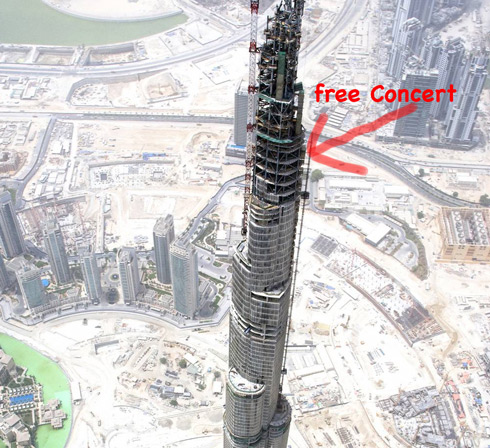This is my response to Eric Galen’s post titled “What would YOU do with freedom and a healthy budget to break a new artist?”
Eric,
To generate a return for your investors, you probably need 1,000,000 people to click their mouse three times. How hard can that be? In fact, every artist is just three clicks (times 100,000 or so people) away from financial independence.
Here are the clicks:
Click one is the click that leads to discovery of a song or artist.
There are many ways to discover music that only require a single click; here’s one: when a receptive music consumer (one whom is open to, and an early adopter of unknown songs) clicks the ‘recommend’ button (attached to some music site or service) to obtain a recommended playlist of new songs.
Click two is the easiest click to obtain; it’s simply the click of the play button.
Click three is the hardest click to obtain; click three is the ‘meaningful’ click.
Meaningful clicks result in a purchase, or a share, or a placement in a personal playlist (where songs are spun until they are loved), or a recommendation to friends, or a trip to a concert, or a public spin (at a party for example), and/or meaningful clicks result in other meaningful actions…
Since most consumers can’t tell the difference between a great song and a good party (where they often hear the best new band on earth whilst drinking and dancing the night away), I would argue that in the absence of context (celebrity or radio endorsement, social group endorsement, or serious momentum to celebrity), most consumers will do nothing; they will not generate a meaningful click.
It’s interesting to note, that a free download to someone’s pig pile of songs is tantamount to doing nothing (a non meaningful click), as a song sitting within a hard drive filled with 10,000 other songs is probably as lost as it was on the Internet, and this is why unknown artists lacking in ‘context’ should not worry about file sharing, it’s simply not meaningful enough (to you) to matter.
It’s also important to note that as meaningful clicks begin to occur, discovery accelerates (click one). A song or an artist becomes ‘viral’ when meaningful clicks lead to discovery clicks, which in turn causes a self-perpetuating / reinforcing loop to form; where promotion costs plummet in proportion to exposure impressions generated.
So you need meaningful clicks. You need context. Here’s how to get it:
Context Obtaining Method One - The Stunt Lottery Method
This is how the music industry typically operates (which Eric points out in his post): Fly the band to Dubai; they build really tall buildings there. Stage the tallest, free, open-air concert in the world. It doesn’t matter if anyone hears it, the context-generating news blast will hopefully generate the meaningful clicks you need to go viral. I can see the headlines now: “Galen’s Band Performs For God”. 
The problems with the stunt lottery method:
Beyond that fact that most lottery stunts fail, as Alan Shadow pointed out in his post “You’re So ‘Yester-moment’”, today’s hot news always becomes yesterday’s cold lunch. The news cycle happens so fast now, and the news flow is so powerful that nobody can (record labels, politicians, consumer product companies, celebrities) afford to stay in the public eye long enough to motivate enough people (think ROI - especially in this industry) to generate meaningful clicks.
But that doesn’t stop promoters from buying clicks… I review a lot of marketing campaigns. The red line on the left resembles a graph of the results of almost every marketing and promotion campaign I study.
I review a lot of marketing campaigns. The red line on the left resembles a graph of the results of almost every marketing and promotion campaign I study.
A big blob of money is spent, traffic rises, and soon thereafter traffic falls back to just above pre-spend rates. Repeatedly, marketers confuse buying discovery traffic (click 1) with obtaining meaningful clicks (click 3).
Read about the death of SpiralFrog as a stunning example.
I will wager a bet that nobody can come up with a lottery stunt that will 1) not generate the bell curve shown here, and 2) keep the unknown artist in the public eye long enough to achieve breakeven on the total investment in the artist.
Context Obtaining Method Two - The Keiretsu Method
You need three things (all three things): context, continuity/persistence and adequate conversion; the keiretsu method will give you all three. To me, a keiretsu (a Japanese word) is a loose collection of organizations that unite to achieve common goals. To repeat, you need:
- Context - celebrity or radio endorsement, social group endorsement, or serious momentum to celebrity.
- Continuity - at least eighteen months where your brand is repeatedly uttered by many others (others = other artists with lots of fans) and at almost zero cost to you.
- Conversion - you need enough impressions (over time), times a click-through-rate (CTR), times a conversion rate (to meaningful clicks) to generate an adequate return on investment.
Note: Here’s the metaphor: You need to build a popular shopping mall with known anchor tenants, just to promote a small deli counter (your artist) tucked away in the far corner of the food court.
Simple math: You probably need to repeatedly expose at least 20,000 people per US state (1,000,000 total) to a compelling message over 18 months (10 to 20 million impressions). You are counting on some percentage of these 1,000,000 people to ultimately generate meaningful clicks (buy stuff and amplify your message). You are hoping that your message/brand/artist goes viral along the way.
The Keiretsu Method - some operational details
Since you are starting with a small(?) pile of cash, purchase eighteen months of context (and some continuity) first. Ink multiple (and staggered) celebrity (artist, actor, athlete) endorsement deals that keep your brand in the pop-public’s eye for at least eighteen months. In addition, ink a mutually beneficial deal with a large brand(s) whereby you can leverage the brand’s marketing and promotion efforts. This will be easier once you have celebrities X and Y involved.
Perhaps using SonicBids and other methods (over 18 months) find 100 artists with 100 really good songs. In exchange for exposure (see previous paragraph) these artists are going to:
- Enable free (but temporary) downloading of their song.
- Temporarily waive any royalty fees that could be owed to them by you.
- Cross-promote your brand.
You are taking no other rights from any of these artists. You are also going to provide all participating artists with the best, branded merch available…at wholesale (or below) prices. There are a ton of other things that you can do (for participating artists), but this is a blog post not a book…
Why do you need 100 other artists?
The combined fanbase of your 100 chosen artists should be over 100,000 true fans. The message-amplifying effort of these fans (over 18 months) will be significant (generating a million chirping crickets). Moreover, it’s imperative that you’re always mindful of ‘conversion’. It’s pointless (underlined) to drive traffic to a site (even one with context) that is featuring a single unknown artist. It’s like sending someone to a paint store that only sells blurple (a new color) paint. If you want to obtain both continuity/persistence and adequate conversion you must have a variety of quality product on the shelf. If you don’t, your conversion rate to meaningful clicks will plummet; it will be difficult at best to go viral; and you will never generate an adequate return on investment.
Finally - Wasn’t this all about one artist to begin with?
I should have stated at the top of this post, that I would never promote a standalone artist. The money is in building the best keiretsu at the lowest cost to the participating artists (they give up very little to get a lot). However, there are plenty of creative things you can do to feature your artist within the brand. I would look at doing something with covers and publishing that creates incentives whereby everyone can win…
Related posts: Don’t go over the self-promotion cliff; crush your local radio station instead.
about Bruce Warila